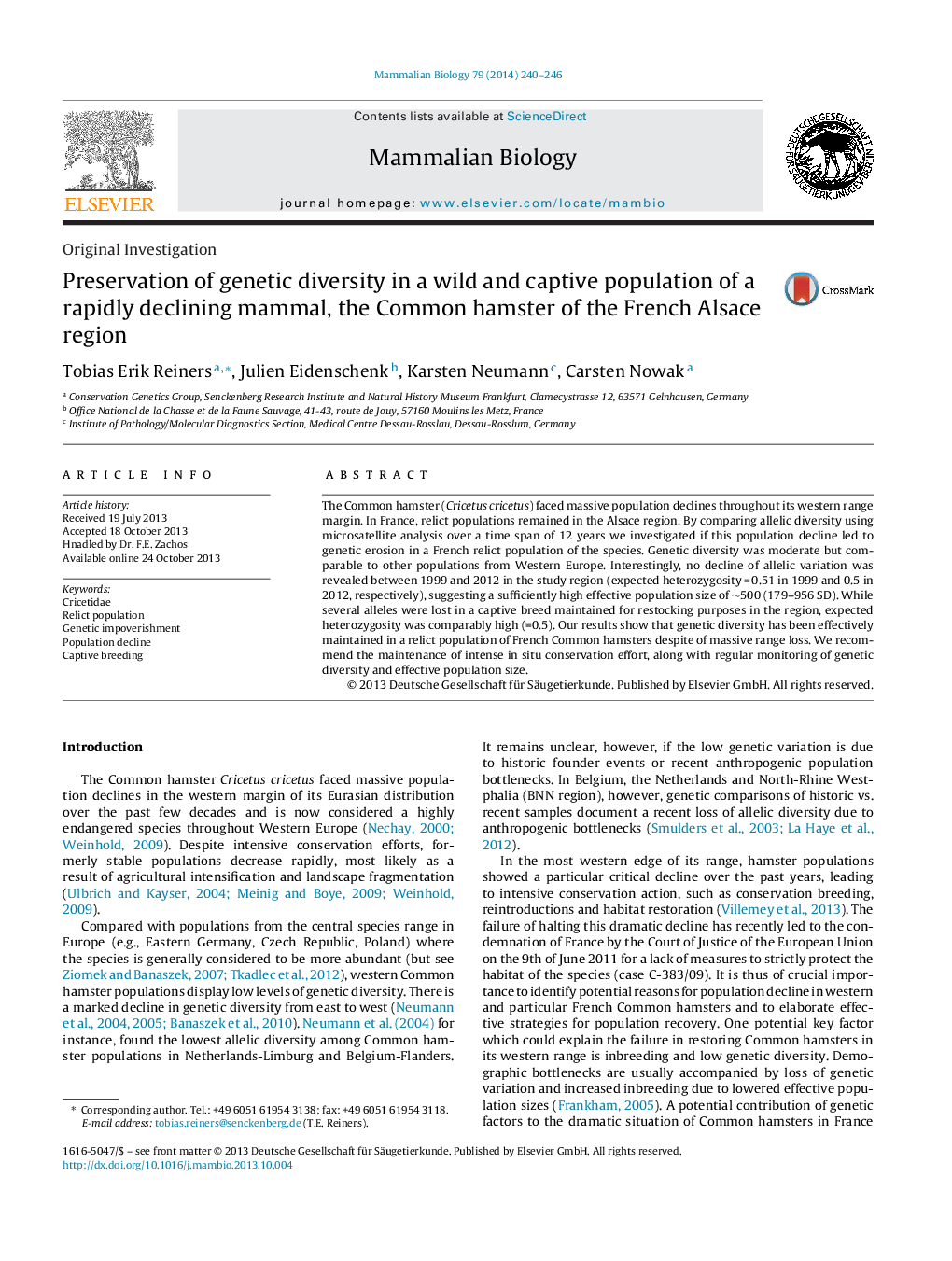| Article ID | Journal | Published Year | Pages | File Type |
|---|---|---|---|---|
| 2193518 | Mammalian Biology - Zeitschrift für Säugetierkunde | 2014 | 7 Pages |
The Common hamster (Cricetus cricetus) faced massive population declines throughout its western range margin. In France, relict populations remained in the Alsace region. By comparing allelic diversity using microsatellite analysis over a time span of 12 years we investigated if this population decline led to genetic erosion in a French relict population of the species. Genetic diversity was moderate but comparable to other populations from Western Europe. Interestingly, no decline of allelic variation was revealed between 1999 and 2012 in the study region (expected heterozygosity = 0.51 in 1999 and 0.5 in 2012, respectively), suggesting a sufficiently high effective population size of ∼500 (179–956 SD). While several alleles were lost in a captive breed maintained for restocking purposes in the region, expected heterozygosity was comparably high (=0.5). Our results show that genetic diversity has been effectively maintained in a relict population of French Common hamsters despite of massive range loss. We recommend the maintenance of intense in situ conservation effort, along with regular monitoring of genetic diversity and effective population size.
